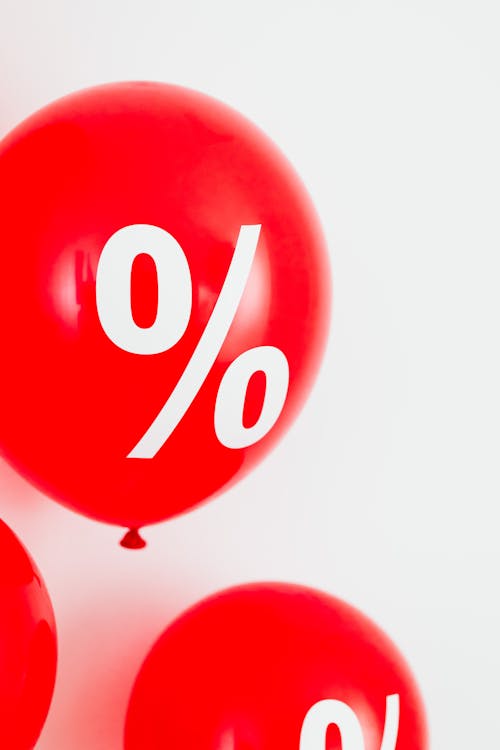
Price Transparency: Why you Should Tell Customers about Price Increases 💰
All industries regularly change up their pricing to keep up with demand and supply changes. Changing customer tastes and preferences also gives opportunities for some brands to maximise their pricing capability. But not all companies are able to have price transparency with their increases.
>Download Now: Free PDF How to Drive Pricing Strategy to Maximise EBIT Growth
Most of them do this without informing customers. But what does that do to customer loyalty and trust? And when is it okay to raise prices?
Since a significant proportion of customers are price-sensitive, telling your customers about a price increase is easier said than done. Raise prices too high or pull out promotional offers and you may just upset your customers. So, how do you find the balance?
In this article, we guide you on how to communicate raising prices to customers in ways that don’t sacrifice quality over your pricing. We show you how shifting the narrative of your focus can bring the right outcomes.
At Taylor Wells, we believe that a value-based customer-centric approach is key to staying in business and elevating brand visibility. We argue that even if letting customers know about price changes can be unpleasant, there are right ways to do it.
If you factor in empathy, pay attention to details, and remain sincere, you send out the message that customers are your valued partners.
What is price transparency and when should you raise prices?
1. To respond to competition – If competitors are offering their prices at a lower or higher rate, you need to keep up. Most businesses also do this to acquire a larger market share while taking advantage of seasonal sales. It’s a surefire way to secure margins, revenue, and profit earnings.
2. Inflation – When there are rising costs and trading is affected all over the world, it becomes a domino effect among industries.
The same thing happened during consecutive Covid-19 lockdowns and restrictions, causing delays in manufacturing deliveries and shortages. This, in turn, led suppliers and shipping industries to raise prices, passing the impact on to customers.
3. Supply shortage – If there is a shortage in your inventory due to increasing demand or other imbalances in the supply-demand equilibrium, then it is appropriate to raise prices.
This happened during the start of the pandemic when people raced to empty the shelves of supermarkets. Raising prices, in this case, helps mitigate panic buying and the unequal distribution of goods and services.
How do brands raise their prices?
First, there are ways that companies do this in a less alarming manner.
In packaged items commonly seen in groceries, companies often reduce the weight or volume of the packages without lowering the price. From cereal boxes to sugar and soft drinks, it has become to be known as shrinkflation.
Other companies may strategise by lessening discounts, promotional offers, and incentives to respond to supply challenges, raising prices – but indirectly. This often happens for “budget savers meal” in fast food chains.

But what about services that are leased, contractual, and subscription-based? How do they raise prices? Do they practice price transparency?
Companies do this by applying new charges on the next billing cycle. But they must let their customers know beforehand. How it is communicated is crucial and it can get tricky.
Do it tactlessly and companies risk losing out customers to competitors. It may result in customer complaints publicised through social media. And oftentimes, public outrage due to price hikes eventually pushed companies to roll back their price decision.
Below are 3 ways to help you communicate your price transparency increase without upsetting customers:
Avoid euphemism
Brand giants like Netflix, YouTube, Apple, and Microsoft used price updates or adjustments to label their price increase. This didn’t work especially for loyal customers.
And it is backed by research that to avoid damaging your customer relationship management, it’s best to present price hikes in an informative, authentic, and transparent communication. Or in a way that helps them understand your reasoning better.
Euphemising and blurring the “bad news” doesn’t help customers receive the brunt of it any better. It only makes them more suspicious and feel deceived about why there is a price increase.
Why is this?
Often, using the same monotonous and quick announcement irks customers. Worse, a third-person point of view sends out the message of lack of empathy, basically leaving them confused.
What is Price Transparency? Be straightforward
Most business owners are reluctant to clearly communicate their pricing. In turn, this can result in public outbursts and bad customer reviews that can eventually influence the inability to retain customers if they’re not addressed right away.
For software companies, a regular price assessment that responds to market trends, customer needs, and shareholders will base its decisions on price analysis and feedback.
A recent study indicates that how customers interpret the “fairness” of the price increase is the second factor of the chain of their reactions. If they don’t think it’s justified, then they won’t likely respond well to it.
Take for instance, how Microsoft announced its Microsoft 365 20% price increase effective March this year for customers who paid monthly, instead of annually. It was done to lock in more customers and revenue with extended arrangements. Either their customers will pay 20% more, or they take the annual subscription price.
“In 2022, Microsoft is rolling out the New Commerce Experience for Office, revamping its software through business partners. It has informed partners that organisations paying by the month will face a 20% hike unless they move to annual subscriptions.”
Obviously, this upset many clients and ensued social media outrage. But luckily, for Microsoft, there are many companies that preferred not to spend more time on training their staff in using new software or other Microsoft competitors.
But compare it to Oxford Pennant who communicated a price hike in this way:
“Darn it! We’re raising prices on October 15th. Almost all of our material suppliers raised their prices this year. Price increases suck! But we’re dedicated to making it with US-sourced materials. You still have a couple of weeks to order before October 15 and receive our old prices even if it ships after the 15th.
We’re always here if you have questions. Now, when are you coming to visit?
All the best,
The Oxford Pennant team”
The price transparency increase is value-based and customer-centric
You would want to highlight the optimal experience that customers will receive such as new features and product/service improvement. This also helps you find cross-selling opportunities as you improve the quality of your offerings. Otherwise, customers can feel that the move is just another profiteering or price gouging act.
1. For instance, a major U.S. airline had to increase its club membership prices. They announced the price change in this way:
“With our $100 million investment, we want to provide you with more opportunities to relax and receive the best experience onboard with us. We’re upgrading our new complimentary food locations that are now easily accessible across the country. We’re also renovating seating and space expansions, acquiring better Wi-fi service, and adding more power outlets during your flight.”
The reasoning and communication were crafted in a transparent manner that centralises on the customer’s story. Rather than a generalised “We are increasing prices effective next month,” it highlights what customers are getting at the tail end of the price hike.
This presents itself as a vital customer added-value which shows that the pricing management, finance, and marketing teams put effort and care about honing in on the customer’s experience and value drivers.

2. Take the example of a gift shop that went as far as to take the blame for a customer forgetting her friend’s birthday. She didn’t take the offer but she really appreciated how the gift shop’s salespeople were more than just salespersons.
The following year, the gift shop reminded the customer about her friend’s birthday, via e-mail. Of course, the price was much higher than its competitors. But the value, care, and thoughtful effort that was put into the experience was definitely worth the price.
3. In the food industry, to keep operating during the pandemic, many businesses had to increase costs. Restaurants had to pass on the costs to customers due to meat supply shortages, delivery expenses, and sanitation measures at the beginning of Covid-19.
To elaborate, a pizzeria in Montreal was rather blunt in communicating the extra fees for their restaurant’s rising costs. As a result, some customers voiced their outrage via social media. They felt the extra fees were unreasonable especially during a global crisis.
This could have been communicated better. But the protests eventually pushed the pizzeria to remove the extra costs for alcohol, wipes, and other disinfecting protocols.
〉〉〉 Get Your FREE Pricing Audit 〉〉〉
Bottomline
Supply shortages, the rise of overall costs, inflation, and the journey back to a pre-pandemic economy is naturally everybody’s concern.
And as such, customers hate businesses that only focus on money. So, to increase prices without losing customers, you have to remind them why they started a relationship with you.
Why do they choose your brand? What sets you apart from your competitors? And what keeps them returning?
Is it your value proposition, your pricing, or customer relationship management? It could be your customer service or the social causes that you support.
But one thing’s for sure. Renewing your partnership with customers often ensures that you keep up with the market competition while keeping your brand sustainable. After all, it’s the customers that continue to keep you in business.
For a comprehensive view on building a best-in-class pricing capability in margin constrained industries,.
Download a complimentary whitepaper on How to Build Hiring Capability To Get The Best Pricing Team.
Are you a business in need of help to align your pricing strategy, people and operations to deliver an immediate impact on profit?
If so, please call (+61) 2 9000 1115.
You can also email us at team@taylorwells.com.au if you have any further questions.
Make your pricing world-class!
Related Posts
Leave a Reply Cancel reply
Categories
- marketing strategy (20)
- Organisational Design (14)
- Podcast (114)
- Pricing Capability (68)
- Pricing Career Advice (10)
- Pricing Recruitment (15)
- Pricing Strategy (201)
- Pricing Team Skills (10)
- Pricing Teams & Culture (15)
- Pricing Transformation (25)
- Revenue Model (11)
- Sales Effectiveness (15)
- Talent Management (5)
- Technical Pricing Skills (29)






